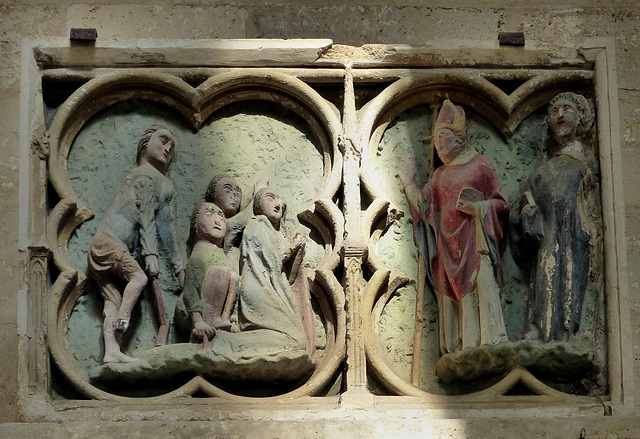Saint-Sulpice-de-Favières - Saint-Sulpice
Saint-Sulpice-de-Favières - Saint-Sulpice
Saint-Sulpice-de-Favières - Saint-Sulpice
Saint-Sulpice-de-Favières - Saint-Sulpice
Saint-Sulpice-de-Favières - Saint-Sulpice
Saint-Sulpice-de-Favières - Saint-Sulpice
Saint-Sulpice-de-Favières - Saint-Sulpice
Saint-Sulpice-de-Favières - Saint-Sulpice
Sens - Cathedral
Sens - Cathedral
Sens - Cathedral
Sens - Cathedral
Sens - Cathedral
Sens - Cathedral
Sens - Cathedral
Sens - Cathedral
Sens - Cathedral
Sens - Cathedral
Sens - Cathedral
Sens - Cathedral
Clermont-Ferrand - Cathédrale Notre-Dame-de-l'Asso…
Clermont-Ferrand - Cathédrale Notre-Dame-de-l'Asso…
Carcassonne - Cathédrale Saint-Michel
Carcassonne - Cathédrale Saint-Michel
Le Puy en Velay - Cathédrale Notre-Dame du Puy
Guebwiller - Eglise Saint-Léger
Taillebourg
Le Puy en Velay - Notre-Dame de France
Le Puy-en-Velay
Abbaye de Cadouin
Abbaye de Cadouin
Abbaye de Cadouin
Abbaye de Cadouin
Abbaye de Cadouin
Abbaye de Cadouin
Abbaye de Cadouin
Abbaye de Cadouin
Abbaye de Cadouin
Abbaye de Cadouin
Abbaye de Cadouin
Abbaye de Cadouin
Abbaye de Cadouin
Abbaye de Cadouin
Abbaye de Cadouin
Abbaye de Cadouin
Saint-Sulpice-de-Favières - Saint-Sulpice
Saint-Sulpice-de-Favières - Saint-Sulpice
Saint-Sulpice-de-Favières - Saint-Sulpice
Saint-Sulpice-de-Favières - Saint-Sulpice
Chartres - Cathédrale Notre-Dame
Chartres - Cathédrale Notre-Dame
Chartres - Cathédrale Notre-Dame
Chartres - Cathédrale Notre-Dame
Chartres - Cathédrale Notre-Dame
Chartres - Cathédrale Notre-Dame
Chartres - Cathédrale Notre-Dame
Chartres - Cathédrale Notre-Dame
Chartres - Cathédrale Notre-Dame
Chartres - Cathédrale Notre-Dame
Chartres - Cathédrale Notre-Dame
Chartres - Cathédrale Notre-Dame
Chartres - Cathédrale Notre-Dame
Chartres - Cathédrale Notre-Dame
Chartres - Cathédrale Notre-Dame
Chartres - Cathédrale Notre-Dame
Chartres - Cathédrale Notre-Dame
Chartres - Cathédrale Notre-Dame
Chartres - Cathédrale Notre-Dame
Chartres - Cathédrale Notre-Dame
Chartres - Cathédrale Notre-Dame
Chartres - Cathédrale Notre-Dame
Chartres - Cathédrale Notre-Dame
Chartres - Cathédrale Notre-Dame
Chartres - Cathédrale Notre-Dame
Chartres - Cathédrale Notre-Dame
Chartres - Cathédrale Notre-Dame
Amiens - Cathedral
Amiens - Cathedral
Amiens - Cathedral
Amiens - Cathedral
Amiens - Cathedral
Amiens - Cathedral
Amiens - Cathedral
Amiens - Cathedral
Amiens - Cathedral
Amiens - Cathedral
Amiens - Cathedral
Amiens - Cathedral
Amiens - Cathedral
Location
See also...
Keywords
Authorizations, license
-
Visible by: Everyone -
All rights reserved
-
197 visits
Saint-Sulpice-de-Favières - Saint-Sulpice


A first church may have existed around 1100. Some parts of a church erected around 1170 still exist. This was already dedicated to Saint Sulpitius the Pious ("Sulpice le Pieux"), chaplain on the court of Clotaire II, King of the Franks, and later Bishop of Bourges. As the church kept relics of Saint-Sulpice, this was a place for many pilgrims from the very beginning.
The construction of the High Gothic church seen today began around 1260. It is for sure the work of an experienced architect, who even may have had ties to the royal court, as the building was financed by Louis IX (aka "Saint Louis") and the Bishopric of Paris. By promoting the pilgrimage to this church, Louis IX from the House of Capet tracked his roots over six centuries back to Merovingian Clotaire II.
This church was built during the "siècle d’or de St. Louis", when the Kingdom of France was politically and economically at its height in Europe.
Of course, such a "royal symbol" had to suffer in the centuries to come. In 1652, during the civil wars ("Fronde"), the church was set on fire. The roof burnt down and the vaultings over four bays collapsed. During the French Revolution the church was severely damaged and later converted into a "Temple of Reason".
The oldest part of the structure (and once the center of pilgrimage) is a small chapel named "Chapelle des Miracles". During recent excavations different skeletons were unearthed under its floor. On one of the walls is this relief. Saint Sulpice, blessing the deseased and badly injured pilgrims.
The construction of the High Gothic church seen today began around 1260. It is for sure the work of an experienced architect, who even may have had ties to the royal court, as the building was financed by Louis IX (aka "Saint Louis") and the Bishopric of Paris. By promoting the pilgrimage to this church, Louis IX from the House of Capet tracked his roots over six centuries back to Merovingian Clotaire II.
This church was built during the "siècle d’or de St. Louis", when the Kingdom of France was politically and economically at its height in Europe.
Of course, such a "royal symbol" had to suffer in the centuries to come. In 1652, during the civil wars ("Fronde"), the church was set on fire. The roof burnt down and the vaultings over four bays collapsed. During the French Revolution the church was severely damaged and later converted into a "Temple of Reason".
The oldest part of the structure (and once the center of pilgrimage) is a small chapel named "Chapelle des Miracles". During recent excavations different skeletons were unearthed under its floor. On one of the walls is this relief. Saint Sulpice, blessing the deseased and badly injured pilgrims.
- Keyboard shortcuts:
Jump to top
RSS feed- Latest comments - Subscribe to the comment feeds of this photo
- ipernity © 2007-2024
- Help & Contact
|
Club news
|
About ipernity
|
History |
ipernity Club & Prices |
Guide of good conduct
Donate | Group guidelines | Privacy policy | Terms of use | Statutes | In memoria -
Facebook
Twitter

Sign-in to write a comment.